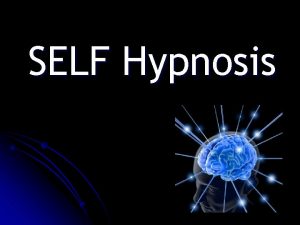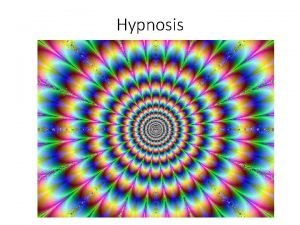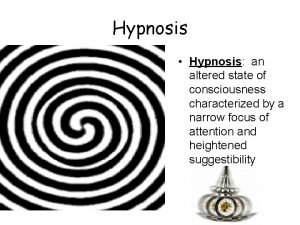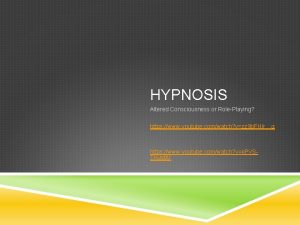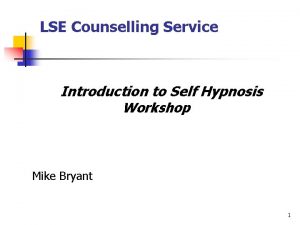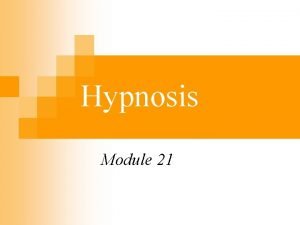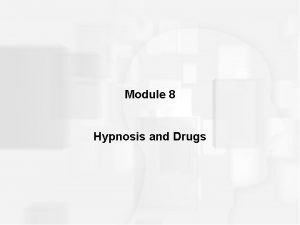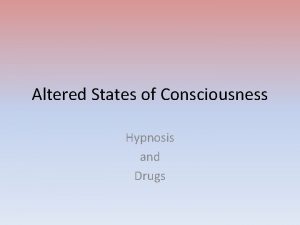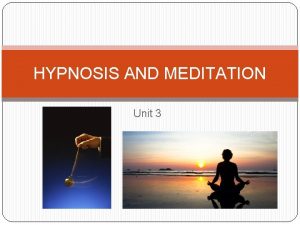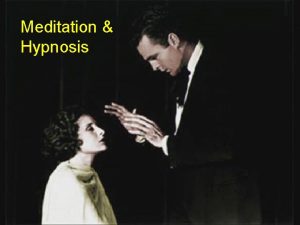Hypnosis Module 21 Hypnosis Introduction Activity 2 n












- Slides: 12

Hypnosis Module 21

Hypnosis Introduction Activity 2 n Compared with what you would have experienced if you were actually relaxing on a beach, what you experienced was: ¨ Not at all the same ¨ A little the same ¨ Between a little and much the same ¨ Much the same ¨ Almost exactly the same

Hypnosis A social interaction involving: hypnotist - makes suggestions about perceptions, feelings, thoughts, or behaviors ¨ subject – follows those suggestions ¨

Why Does Hypnosis Work?

Social Influence Theory n powerful social influences produce a state of hypnosis n a person’s physiological state does not change under hypnosis – state of normal consciousness n social factors influence people to believe hypnosis will work

Divided Consciousness Theory n Promoted by Ernest Hilgard (1904 -2001) – student under hypnosis, deaf n during hypnosis our consciousness splits n one aspect of consciousness is not aware of the role that other parts are playing n can happen to some extent at any time (i. e. running or driving)

Theory Differences n Social Influence Theory – hypnosis is the result of external social variables n Divided Consciousness Theory – hypnosis is the result of one’s internal consciousness

Hypnotic Techniques

Hypnotic Induction n process by which a hypnotist creates a state of hypnosis in a subject n usually done by voicing a series of suggestions n voice: usually calm, rhythmic tone – becomes a focal point for the subject’s attention n begin by giving easy, logical suggestions then progress to more difficult tasks

Hypnotizability n differences in the ability of people to become hypnotized n varies from person to person & from situation to situation (more difficult in front of an audience) 10% - low hypnotizability n 10% - high hypnotizability n rest fall in the middle n

Hypnotizability

Can hypnosis make us do things we otherwise would not do? n hypnosis does not cause behaviors can lead people to certain behaviors they otherwise wouldn’t do, but so can ordinary suggestions.


